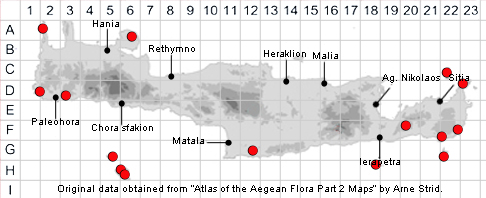SPECIES DESCRIPTION
SENECIO LEUCANTHEMIFOLIUS
Family and Genus:- See- COMPOSITAE/Sect. SENECIO
Common Names:- None
Homotypic Synonyms:- None
Meaning:- Senecio (L) Old-man, a name used by the Roman naturalist and
philosopher Pliny, reference to the grey hairiness as soon as fruiting starts.
Leucanthemifolius (L) With leaves resembling those of
Leucanthemum.
General description:- Annual. Subglabrous or sparsely floccose annual.
Stem:-
1) 5-25 cm. usually several, slender, ascending, simple or sparingly branched.
Leaves:-
1) Broadly oblanceolate in outline, slightly fleshy, coarsely dentate to pinnatisect.
a) lower, sometimes obovate and scarcely divided.
b) upper, with linear-oblong segments.
Flowers:-
1) Capitulum, 15-22 mm diam.
2) Involucral bracts 5-7 mm, linear-lanceolate, glabrous, concolorous; often black
tipped, supplementary bracts, several, up to 2 mm, usually blackish.
3) Ligules, c. 13, c. 8 mm, yellow above, reddish beneath.
Fruit:-
1) Achenes, 2-3 mm, 8-10-ribbed, pubescent between the ribs.
2) Pappus, c. 5 mm.
Key features:-
1) Subglabrous, usually fleshy, with unlobed ± obovate basal leaves.
2) Auricles, of the upper cauline leaves entire or shallowly dentate.
Habitat:- Sandy coasal habitats, open dry shrubby vegetation on rocky slopes,
roadside gravel, screes, fallow fields. 0-600(-1200) m.
Distribution:- Mainly the central and western Mediterranean. rare on Crete known
from only a few scattered locations in mainly coastal areas.
Flowering Time:- Late Mar to early June.
Photo by:- Steve Lenton
